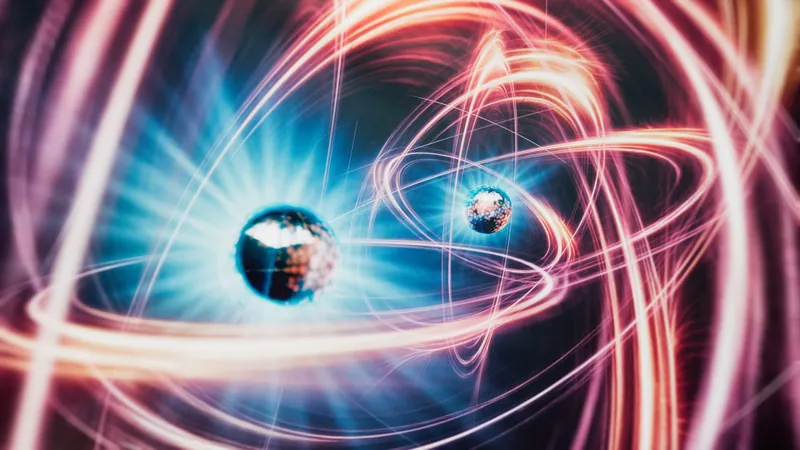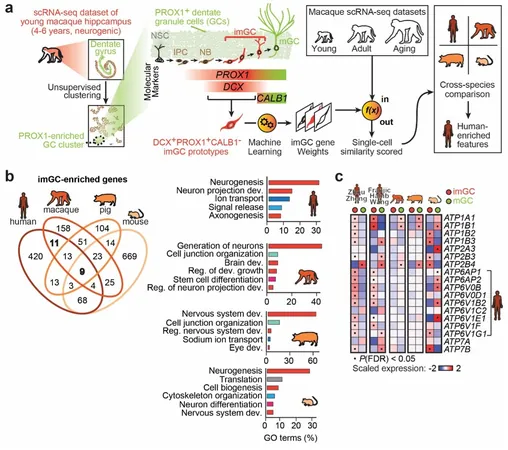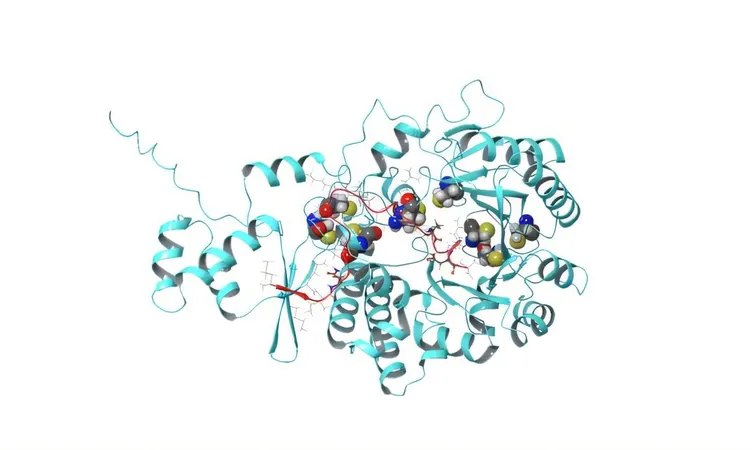
Breakthrough: Scientists Discover Quantum Bayes' Rule, Revolutionizing Probability in Physics
2025-09-01
Author: William
A Quantum Leap in Probability Theory
In an astonishing breakthrough, an international team of researchers has unveiled a quantum version of Bayes' rule, a fundamental concept in probability theory. Published on August 28, 2025, in the prestigious Physical Review Letters, this groundbreaking study explores how beliefs transform in the enigmatic world of quantum mechanics, where conventional physics rules often falter.
Meet the Innovators Behind the Discovery
Leading this innovative research are Professor Valerio Scarani from the Centre for Quantum Technologies and the National University of Singapore, Assistant Professor Ge Bai from the Hong Kong University of Science and Technology, and Professor Francesco Buscemi of Nagoya University in Japan. Together, they have opened new frontiers in understanding quantum probabilities.
Decoding Bayes' Rule: Why It Matters
Bayes' rule, conceptualized in the 18th century by mathematician Thomas Bayes, offers a systematic method for updating the probability of a hypothesis in light of new evidence. This rule is instrumental across numerous domains, including medicine, meteorology, and machine learning, allowing individuals to adjust their expectations effectively.
For instance, if someone suspects they have the flu and later tests positive, Bayes' rule quantifies how that new information impacts their likelihood of being sick.
Quantum Mechanics: A New Frontier for Bayes' Rule
While the classical formulation of Bayes' rule is widely understood, its integration into quantum mechanics has posed significant challenges. Unlike classical systems, quantum entities operate under unique probabilities and wavefunctions that complicate the application of traditional rules.
Although previous studies attempted to create quantum analogues of Bayes' rule, none were rooted in fundamental quantum principles until now. This new research focuses on the adaptive nature of beliefs in response to quantum measurements, seeking to maintain a minimal shift in perspective.
The Principle of Minimum Change: A Quantum Perspective
At the heart of the team's approach is the principle of minimum change, which posits that beliefs should be adjusted only as much as necessary when new information surfaces. In classical terms, this concept is expressed by minimizing the disparity between original and updated probability distributions.
Translating this idea to the quantum realm, the researchers utilized quantum fidelity—an indicator of how closely two quantum states resemble one another. Their objective was to maximize fidelity, ensuring the slightest change in belief while still adapting to the latest observations.
Unveiling the Petz Map Connection
The researchers made a remarkable connection: their newly derived equations correspond to the Petz recovery map, a pivotal mathematical instrument in quantum information theory established in the 1980s. This discovery not only validates the Petz map's relevance in quantum reasoning but also introduces new avenues for applications in quantum error correction and quantum machine learning.
What Lies Ahead? The Quantum Future Awaits
With this revolutionary finding, scientists are now motivated to explore whether the principle of minimum change can inform additional quantum analogues using various mathematical measures. Their work potentially bridges the chasm between classical and quantum reasoning, laying the groundwork for future advancements in quantum technologies.









 Brasil (PT)
Brasil (PT)
 Canada (EN)
Canada (EN)
 Chile (ES)
Chile (ES)
 Česko (CS)
Česko (CS)
 대한민국 (KO)
대한민국 (KO)
 España (ES)
España (ES)
 France (FR)
France (FR)
 Hong Kong (EN)
Hong Kong (EN)
 Italia (IT)
Italia (IT)
 日本 (JA)
日本 (JA)
 Magyarország (HU)
Magyarország (HU)
 Norge (NO)
Norge (NO)
 Polska (PL)
Polska (PL)
 Schweiz (DE)
Schweiz (DE)
 Singapore (EN)
Singapore (EN)
 Sverige (SV)
Sverige (SV)
 Suomi (FI)
Suomi (FI)
 Türkiye (TR)
Türkiye (TR)
 الإمارات العربية المتحدة (AR)
الإمارات العربية المتحدة (AR)